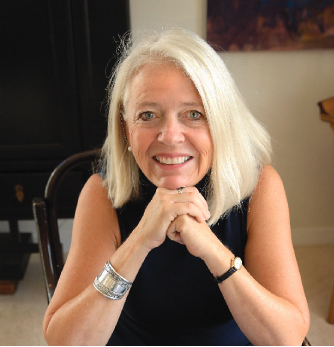Judy Addicott Kimmel wants peace to have a seat at the table—the U.S. Cabinet table. As radical as that may sound for a government that spends more than $400 billion a year on a Defense Department whose primary role is preparing for war, the idea of a Department of Peace isn’t a new one. It’s been kicking around since George Washington’s administration and, in fact, in the last century alone Congress considered 83 bills on the matter, but rejected them all.
Now, an 84th bill is going before the House. HR 808, sponsored by Democratic presidential hopeful Rep. Dennis Kucinich of Ohio, would establish a Department of Peace whose role is to focus on domestic and international violence prevention.
Kimmel, a Mill Valley business consultant who has worked for a slew of nonprofits and participated in the peace movement for decades, is pushing hard for passage of the bill through her organization, the 45,000-member Peace Alliance, of which she is development coordinator.
Even though there is already a U.S. Institute of Peace think tank, it receives only minuscule funding and has little executive power, Kimmel says. “A Cabinet department would be a whole different matter. It would have a secretary who would be at the president’s table.”
Among other things, the Department of Peace would oversee programs to reduce family violence, teach mediation to school kids, work to dismantle gangs and rehabilitate the prison population—a daunting agenda, but one proponents say would greatly improve our national quality of life and yield a hefty financial payoff.
Kimmel speaks with quiet passion on the idea, though her words are often met with eye-rolling by skeptics who view a Peace Department as a holdover from the hippie days. When she does make a convert, it’s when she talks numbers. Addressing conflict before it occurs is far cheaper than responding to its aftermath, Kimmel attests: a dollar spent on violence prevention saves 10 spent on law enforcement and incarceration, and a World Health Organization report has estimated the economic toll of violence in the United States at $300 billion a year. “That’s just domestically,” she adds. “That’s not counting the cost of war.”
Internationally, a Department of Peace would advise the president and the secretaries of Defense and State on root causes of violence and practical ways to counter it before it becomes full blown. “We don’t want to abolish the Department of Defense or the military,” Kimmel says. “We want to complement it by offering solutions.” Prior to the Iraq war, she points out, two thirds of U.S. military missions were peace-keeping in nature. Yet less than 1 percent of today’s military budget goes toward training in the art of promoting peace.
“There’s a tremendous body of research to draw on in the area of violence prevention, and it’s not getting much government attention,” she insists. Conversely, whereas 30 years ago only one U.S. university offered a major in conflict resolution, today more than 300 do.
All that expertise could be tapped via another part of the Kucinich bill, establishment of a Peace Academy. Kimmel likens it to a military academy, an institution where young adults could go into a period of service, perhaps for the State Department or a nationwide network of programs like AmeriCorps. Imagine how different the outcome might have been in Iraq, she speculates, had such know-how been part of the arsenal of skills among our political leaders. “The military was ill prepared for the endgame,” she says. “Trained peacekeepers could have made a difference. Maybe all the things that went wrong wouldn’t have gone wrong.”
Kimmel is working to get a similar bill introduced in the Senate. Plenty of senators are paying attention, thanks to the Peace Alliance’s savvy. “Because we’re organized by congressional districts, we can be very effective at the national level,” says Kimmel. “There are 435 districts and we have teams in 300 of them. The peace movement has grown up.”
So far, 20 cities have endorsed the Department of Peace idea, including San Francisco, Oakland and San Jose. “People are realizing that our country is in trouble,” Kimmel says. The Peace Alliance website (thepeacealliance.org) gets twice the traffic it did a year ago, she points out. “The last election was a mandate for change. People in Washington have been put on notice.”


